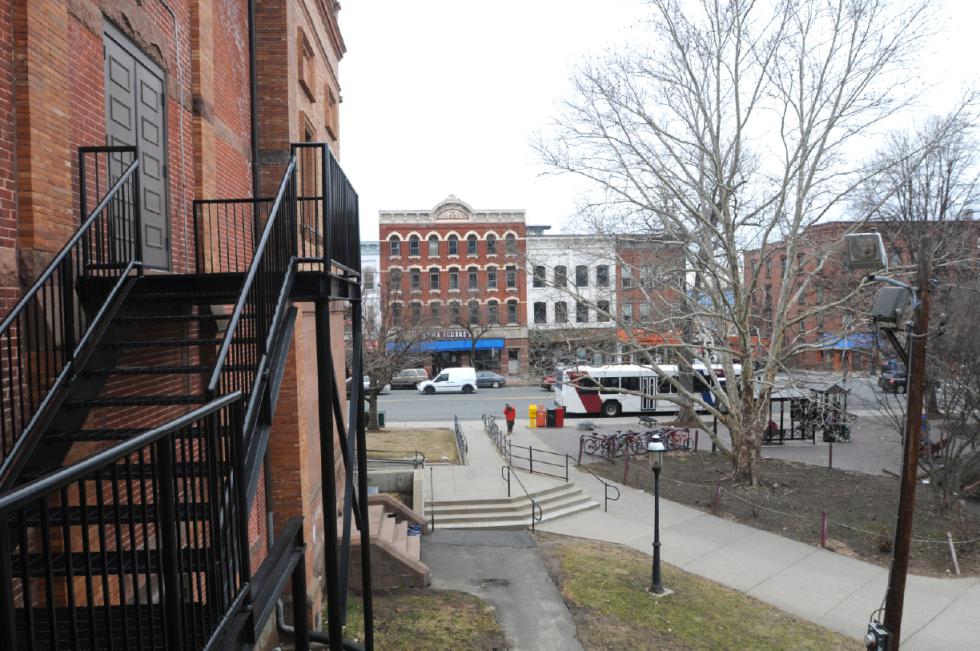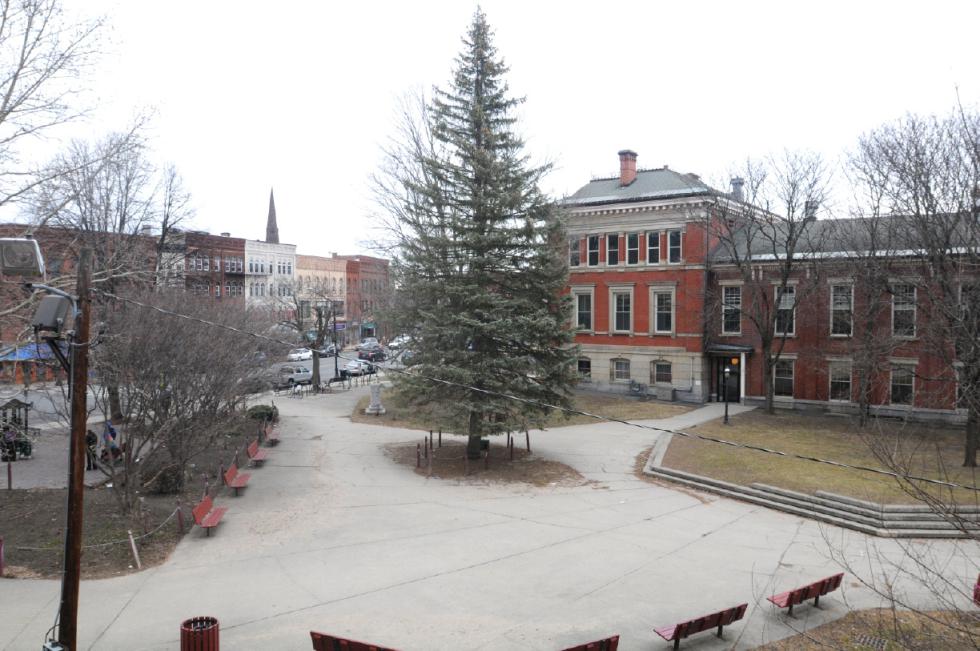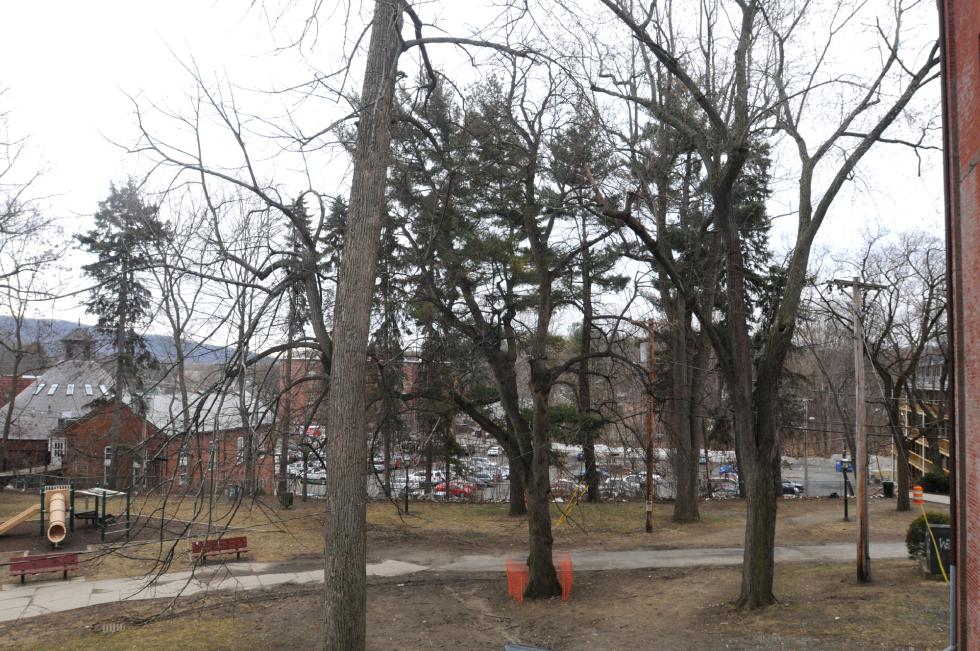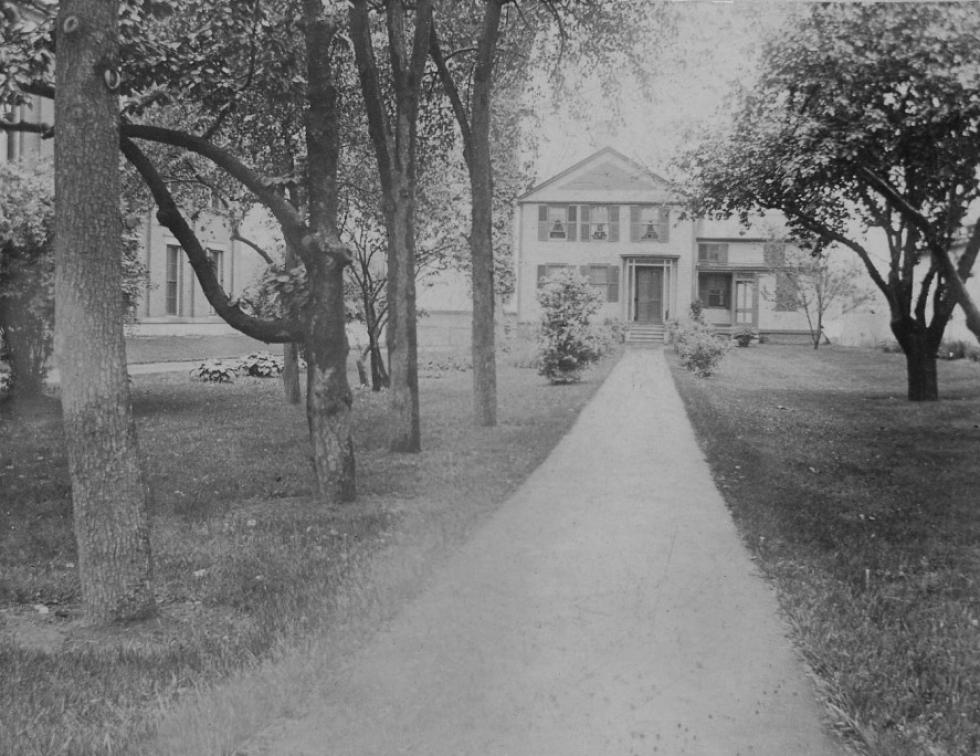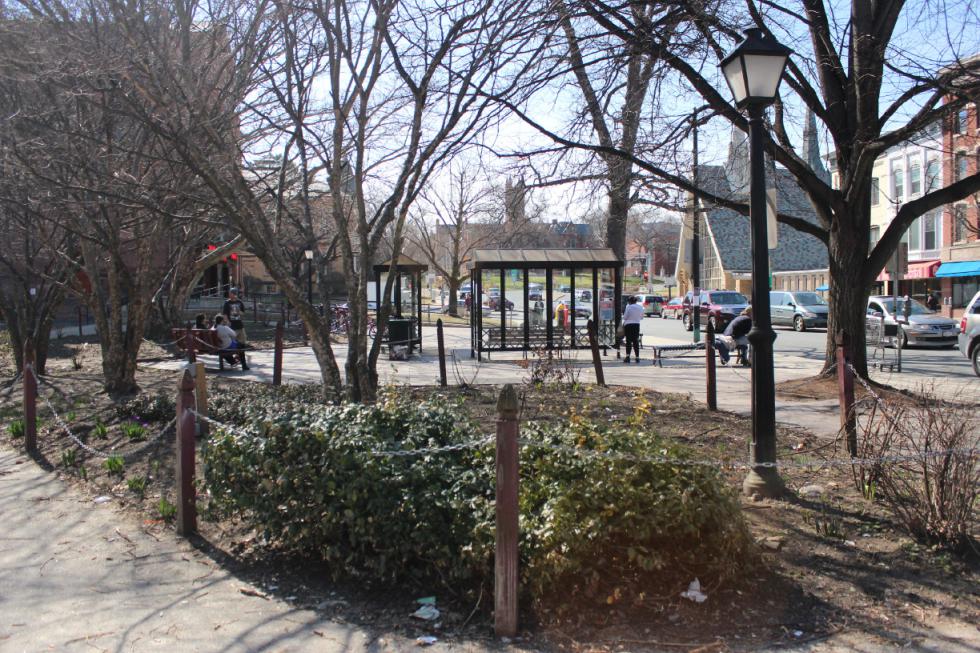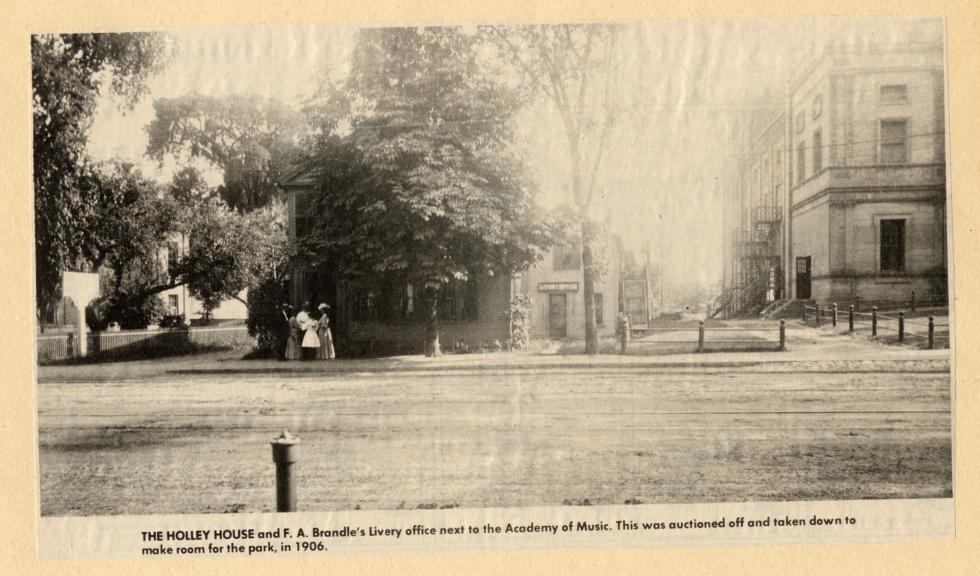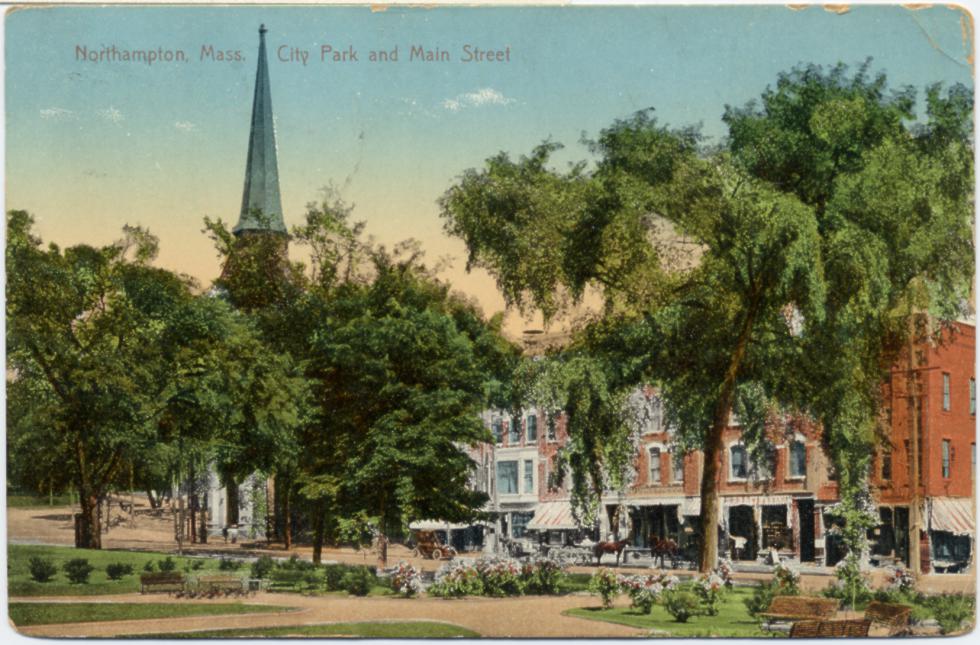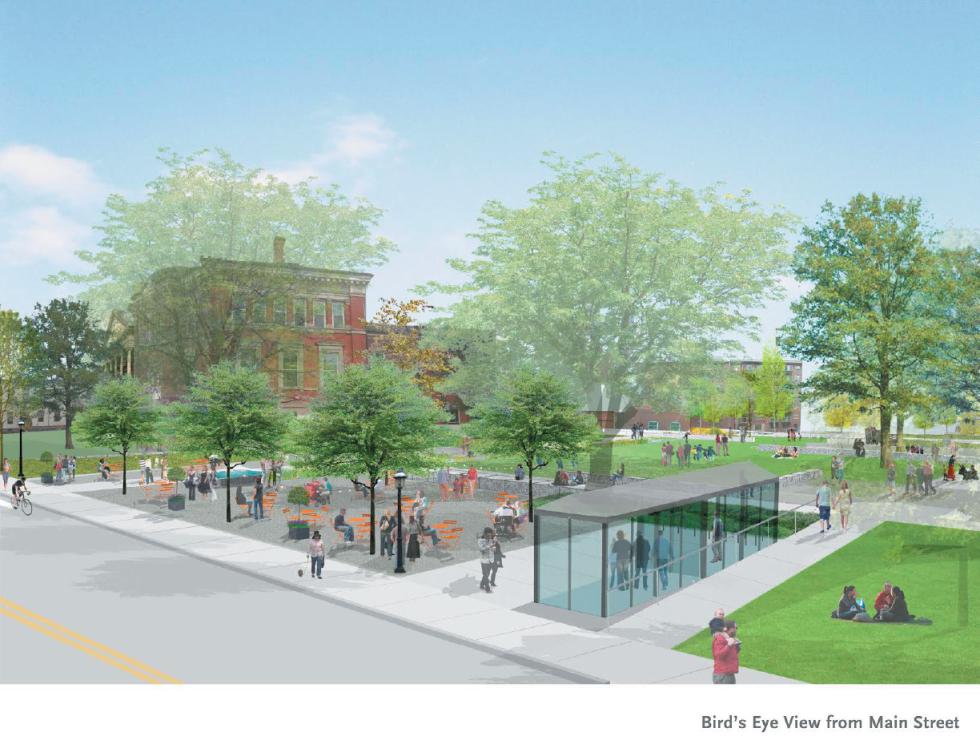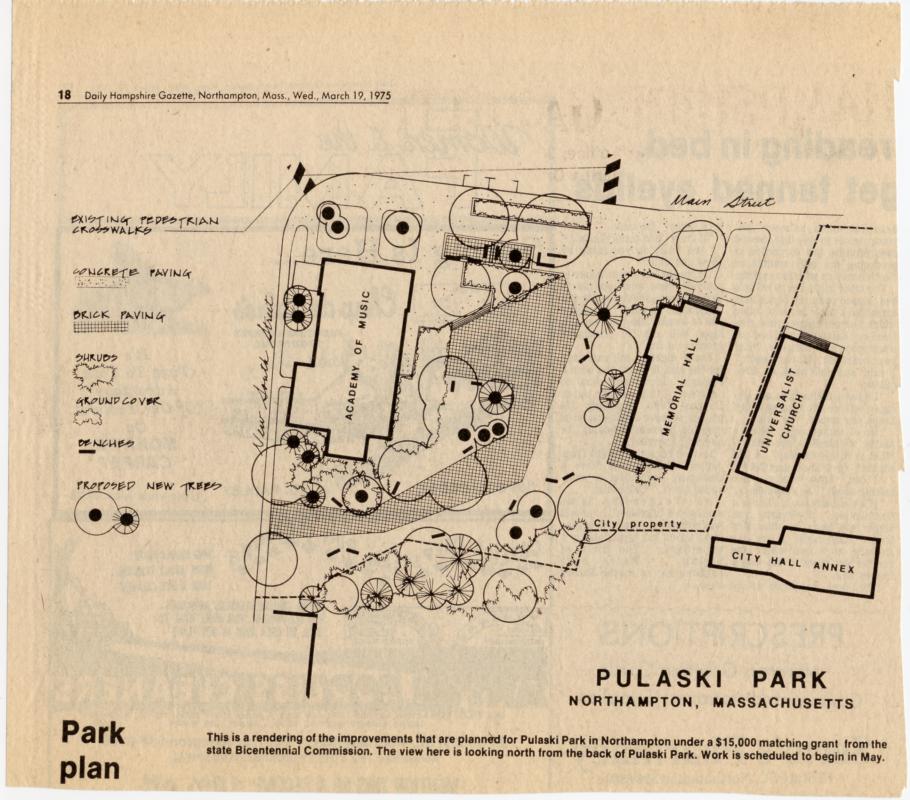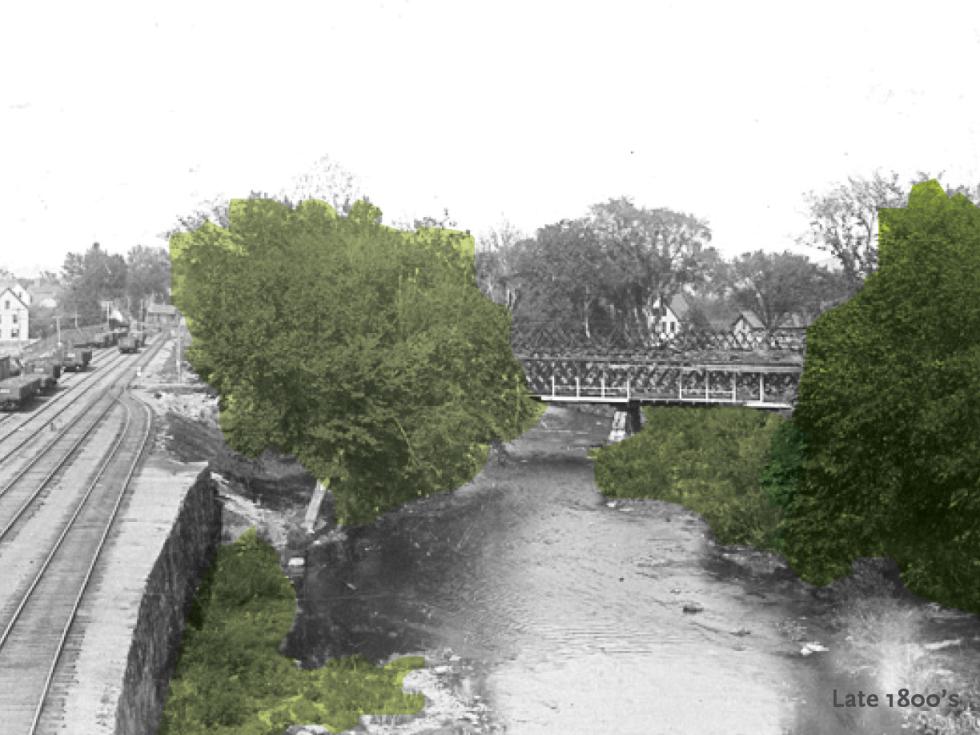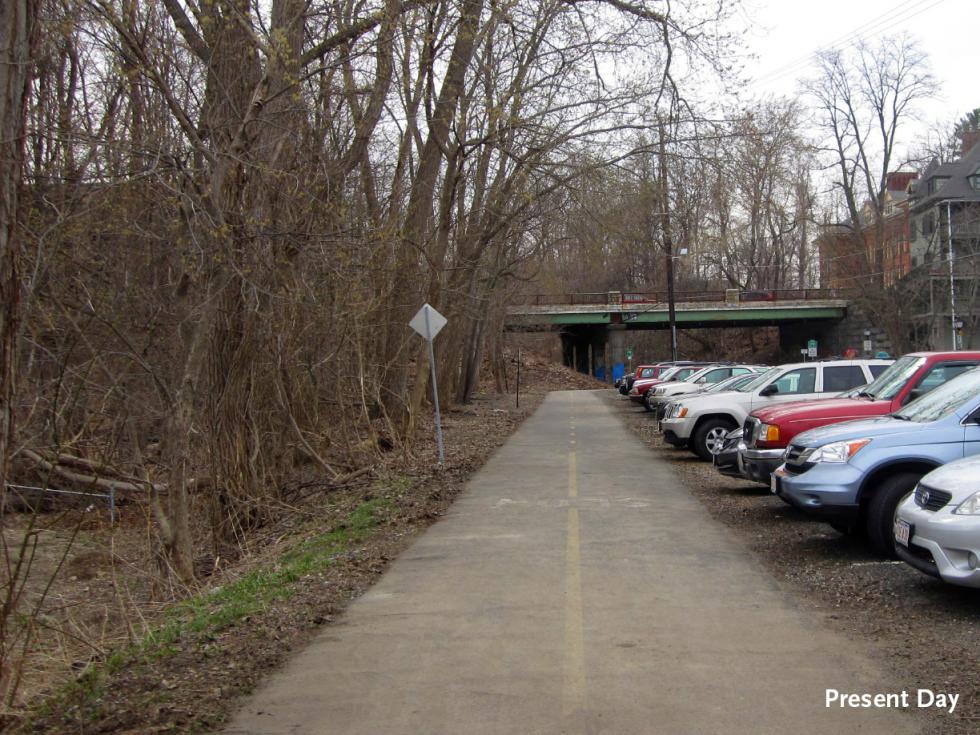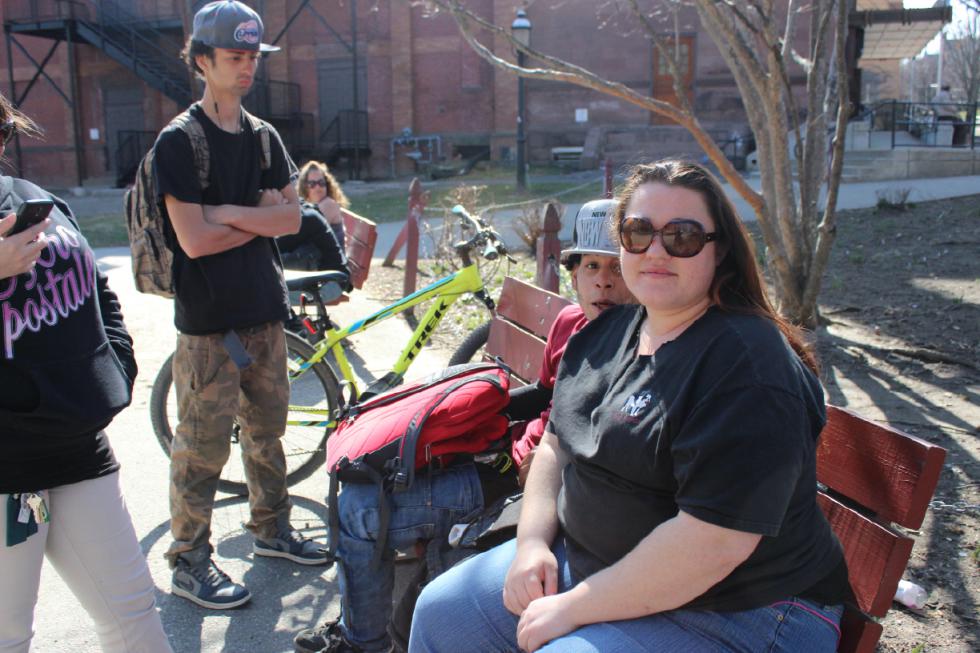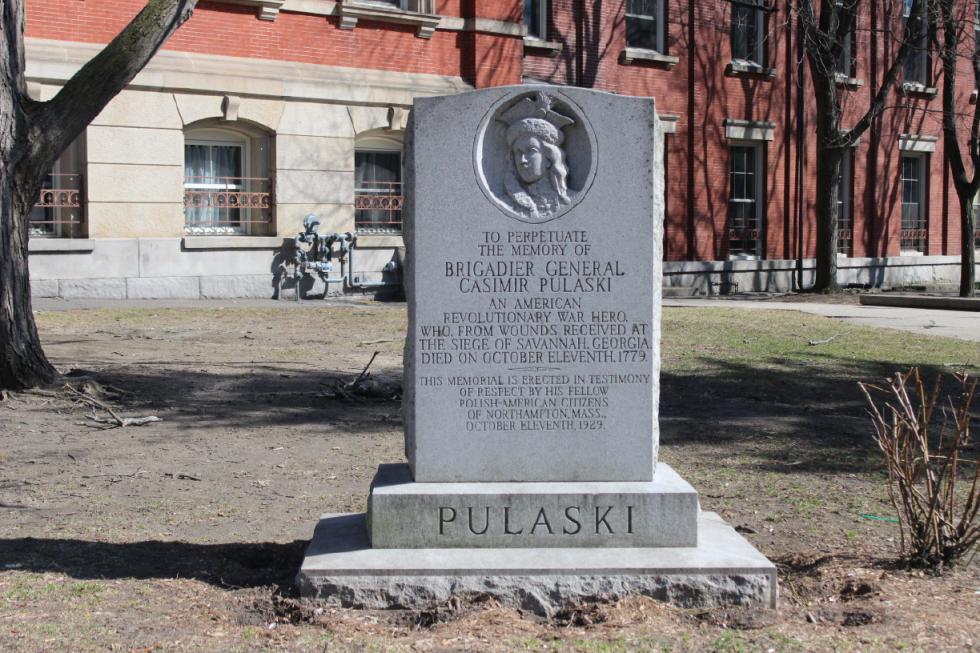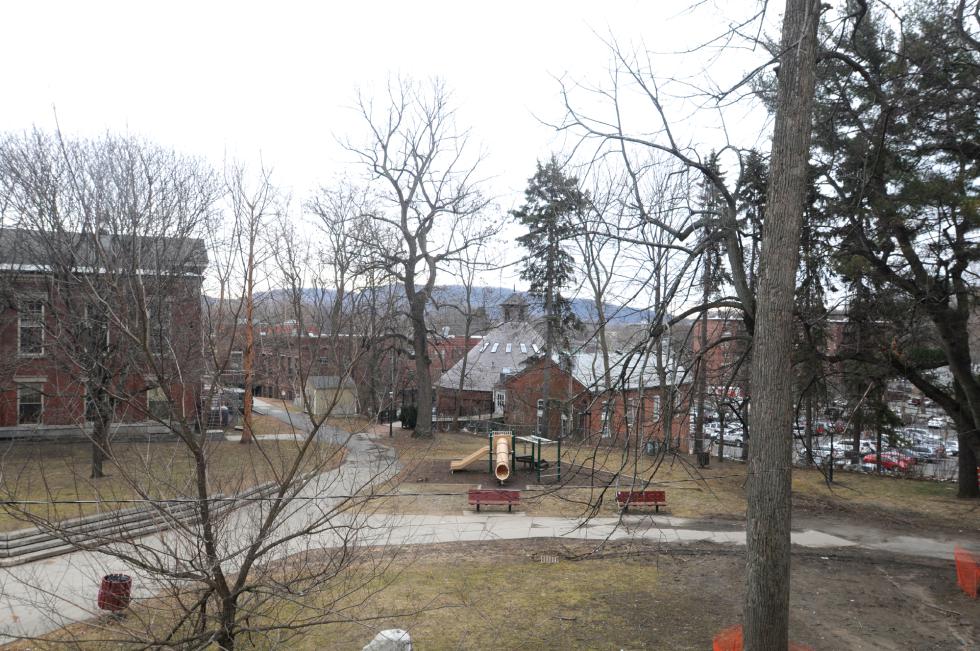In a Northampton park where Kira Coe and her friends spend a spring day in 2015, young men and their families met in 1775 before marching off to fight the British during the Revolutionary War. During much of the 1800s, the Main Street space held a livery office — a place where townspeople gathered for carriage service to destinations around the Valley, and since the early 1900s, the area has filled the explicit communal desire for a park.
Despite everything that has changed about Northampton since settlers first arrived in the 1600s, the need for gathering in nature endures, says Lauren Stimson. Stimson is the lead architect on Pulaski Park’s redesign, which will include a concert area, a rain garden, and a patio area with movable tables and chairs.
Once the common green, Pulaski Park — last redesigned in the ’70s — is now made up of more pavement than green. Starting this summer, that will change, says Stimson, who has been working with the city on the designs since 2007. Following some preliminary design work by Stimson and her team at her husband’s firm, Stephen Stimson Assiocates, the project stalled while the city worked on funding. In spring 2014, the city held a series of public hearings geared at getting community input, during which Lauren Stimson and her colleagues presented in-progress designs and heard feedback.
Jim Laurila, city engineer at Northampton’s Department of Public Works, says they have $200,000 in state parks funding, as well as $1.45 million for the first phase of construction, which he says will go to bid in May or June. Construction will begin this summer and continue into summer 2016. The second phase of the project, says Laurila, will cost an estimated $625,000, which the city will work to land over the next calendar year.
It’s a beautiful spring afternoon and John Dineen, 54, sits on a bench at Pulaski Park. “It’s nice out,” he says. “I’m soakin’ up some sunlight — finally.” The Soldier On resident says it’s his first time enjoying the park and that the warmth is most welcome after one of the worst winters he can remember.
Others at the park have been coming here for years and have some concerns with the planned overhaul.
“They’re getting rid of our Christmas tree?” exclaims Kira Coe, 28, of Leeds, saying her kids love coming to see Mr. and Mrs. Claus every year here at the base of the large holiday tree, the blue spruce at the park’s center. Her head tilts back as she looks the tree up and down, its branches still decorated with multi-colored holiday bulbs. “I grew up with this Christmas tree.”
Stimson says the blue spruce at the park’s center will be removed in order to open up the space, but another tree will be planted towards the rear of the park for decorating purposes during holiday festivities.
Tazz Sosa, 19, of Easthampton, arrives and cozies up beside Coe. “This is my workout spot,” says Sosa. He says he often comes here for sets of push-ups. “This used to be my home.”
“This used to be everyone’s home,” interjects Delia Ruiz, 32, of Florence, recalling with a laugh how she and her friends often ended up sleeping in the park, weather permitting. “This is our spot.”
A reggaeton beat starts from a speaker beside Sosa. Coe, Ruiz, and Sosa smile, laugh and start moving in time.
Amy Asker, 56, sits on a bench at the bus stop in front of Pulaski Park, waiting for a bus that will bring her to her Northampton home. She says she’s just come from a kite-flying session with her friend’s two-year-old. Asker says she looks forward to more open space at the park.
“It’ll be wonderful to see some musicians out there,” she adds with a nod behind her.
Colin Cherry, 16, of Springfield also sits, waiting for his bus. He looks excitedly at design renderings for the park. “I think we might have found a new hangout place,” he says to his friends.
No park in all your travels can compare with this,” reads a 1912 postcard addressed to Elizabeth Schmitter. “Our beautiful City Park of Northampton.”
From the looks of the photograph on the postcard, the park was larger and greener than the park we know today. In the days before and after that postcard was written, the now Pulaski Park of Northampton has taken on many names and roles within the downtown area. However differently the space has appeared and been referred to — City Park, Main Street Park, Central Park, Pulaski Park — the space between Memorial Hall and the Academy of music has been a gathering place for as long as there have been people in Northampton to gather.
Stimson says the team has spent a lot of time in Northampton in the past year, researching its history and talking to its people to get a feel for the park’s history and the needs within the city. It’s important, she says, to ensure the designs specifically reflect the community. A site’s history is complex, says Stimson, as it typically involves sociology and culture as well as geography and ecology. Stimson says it became clear that the park was once a place for settlers to satisfy various needs — they got fresh water from the river, let their horses graze in the grass, and got wood for fires.
Hampshire County’s Mill River once coursed through downtown Northampton, an attraction for colonial settlers. It flowed from the Smith campus, took an easterly turn just south of West Street so that it came parallel to Main Street, wrapped south — taking modern-day Conz Street’s course — and united with the Connecticut River. Though problematic flooding during the 1930s led to the river’s redirection away from downtown, the river’s mark on its geography remains.
“We just thought it was so cool, because when you stand at the edge of Pulaski Park, [it’s like] the old river is still there,” says Stimson. “There’s this scar in the landscape.”
Northampton residents may no longer need water, hay, and wood from here, but Stimson says having a common green is still an important communal need.
As it stands now, Pulaski Park’s back staircase descending into the parking lot near the Peter Pan bus station is so steep and dark that it often goes unused. With a milder grade, a new staircase, and rearranging of vegetation to allow for more light, people are more likely to stroll through the park to go to and from Main Street.
In keeping with the riparian species — plants that grow along rivers — towards the south side of the park, Stimson says the designs call for additional riparian trees. She and the team tried to incorporate as many of the park’s existing trees as possible into the design, but some of them have to be removed in the name of continuity. Lindens, sugar maple, and honey locusts are among those they’ll be adding to the mix.
In the spirit of Northampton’s embrace of environmentalism, Stimson says, the designs incorporate a bioswale, or stormwater garden. Bioswales are intended to mimic the function of natural wetlands. Filled with grasses and other nitrate-absorbing plants which filter out toxic roadway materials, Pulaski Park’s 165-foot bioswale will clean the downtown runoff and send it on its way to the Connecticut River. Stimson says such gardens are becoming increasingly popular on the West Coast as a means of helping out conventional water systems and filtering runoff before it hits bodies of water, but they are only beginning to catch on in New England.
“This is just one small thing that the city could do,” says Stimson, referencing the need for a cleaner Connecticut River. “When Northampton does something like this, people will see it, and it will be a model for other places.”
Laurila says there will also be a “woodland walkway” and a “nature play area” for children. He says the focus is to keep Pulaski Park as a gathering place — a common green.
“We’re really just trying to create a space that everyone can use and enjoy,” Laurila says. “I think it’s a very exciting project … people are going to be very pleased when it’s done.”•
Amanda Drane can be reached at adrane@valleyadvocate.com

